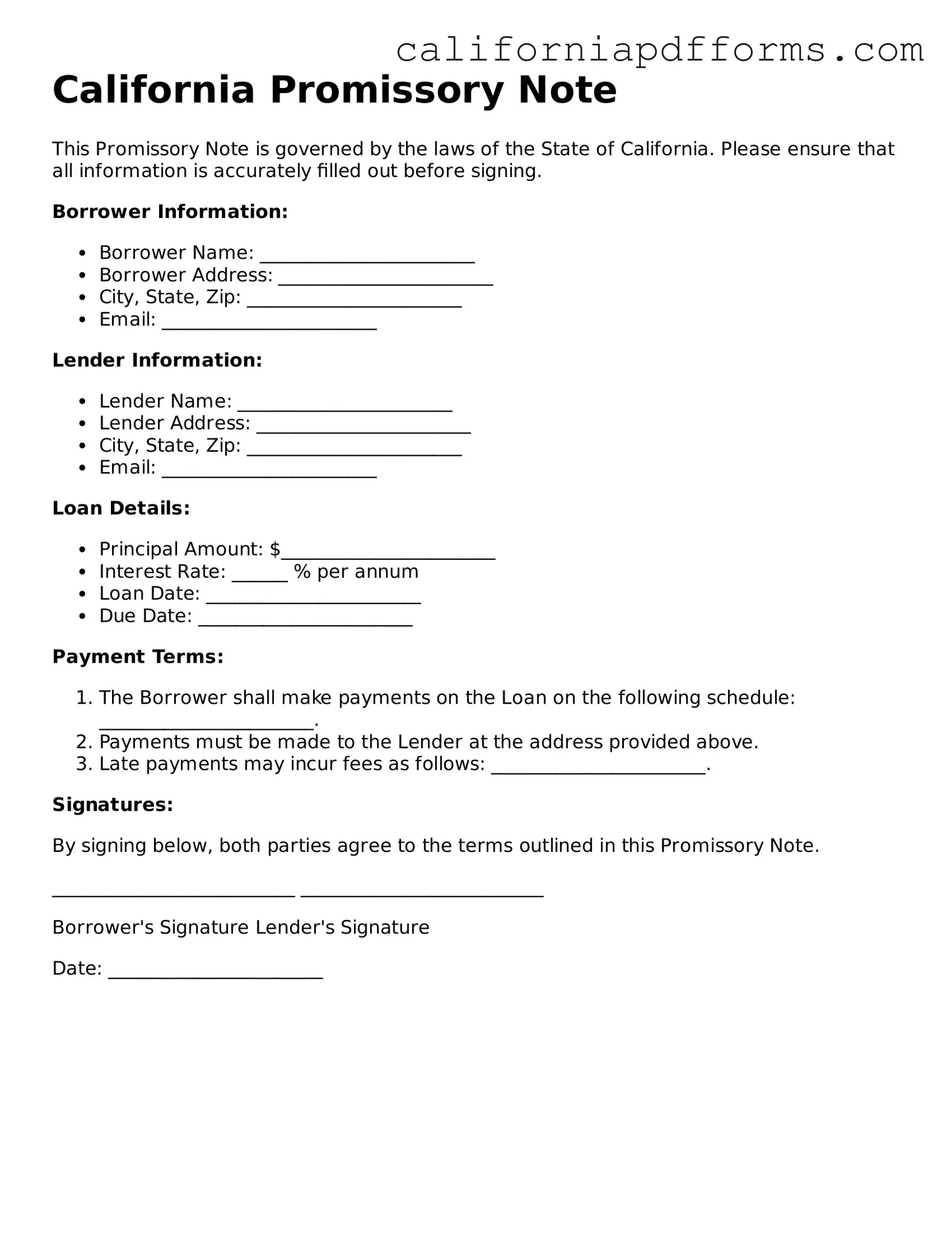What is a California Promissory Note?
A California Promissory Note is a legal document that outlines a borrower's promise to repay a loan to a lender. This document details the amount borrowed, interest rates, repayment terms, and any consequences for defaulting on the loan. It serves as a written record of the agreement between the parties involved.
Who typically uses a Promissory Note?
Promissory Notes are commonly used by individuals, businesses, and organizations. They are useful in various situations, including:
-
Personal loans between friends or family members.
-
Business loans from one entity to another.
-
Real estate transactions where financing is involved.
A standard California Promissory Note includes several key pieces of information:
-
The names and addresses of the borrower and lender.
-
The principal amount of the loan.
-
The interest rate and how it is calculated.
-
The repayment schedule, including due dates and amounts.
-
Any late fees or penalties for missed payments.
-
Conditions under which the note can be declared in default.
Is a Promissory Note legally binding?
Yes, a Promissory Note is a legally binding contract. Once both parties sign the document, they are obligated to adhere to the terms outlined. If the borrower fails to repay the loan as agreed, the lender can take legal action to recover the owed amount.
Do I need to have a lawyer to create a Promissory Note?
While it is not mandatory to have a lawyer draft a Promissory Note, it is highly recommended. A legal professional can ensure that the document meets all legal requirements and adequately protects your interests. If you choose to create one yourself, be sure to follow the state laws and include all necessary details.
Can a Promissory Note be modified after it is signed?
Yes, a Promissory Note can be modified after it is signed, but both parties must agree to the changes. It is best to document any modifications in writing and have both parties sign the updated agreement to avoid misunderstandings in the future.
What happens if the borrower defaults on the Promissory Note?
If the borrower defaults, the lender has several options. They may choose to:
-
Contact the borrower to discuss the missed payment.
-
Charge late fees as specified in the note.
-
Take legal action to recover the owed amount.
It’s important for both parties to communicate openly to resolve any issues before escalating the situation.
